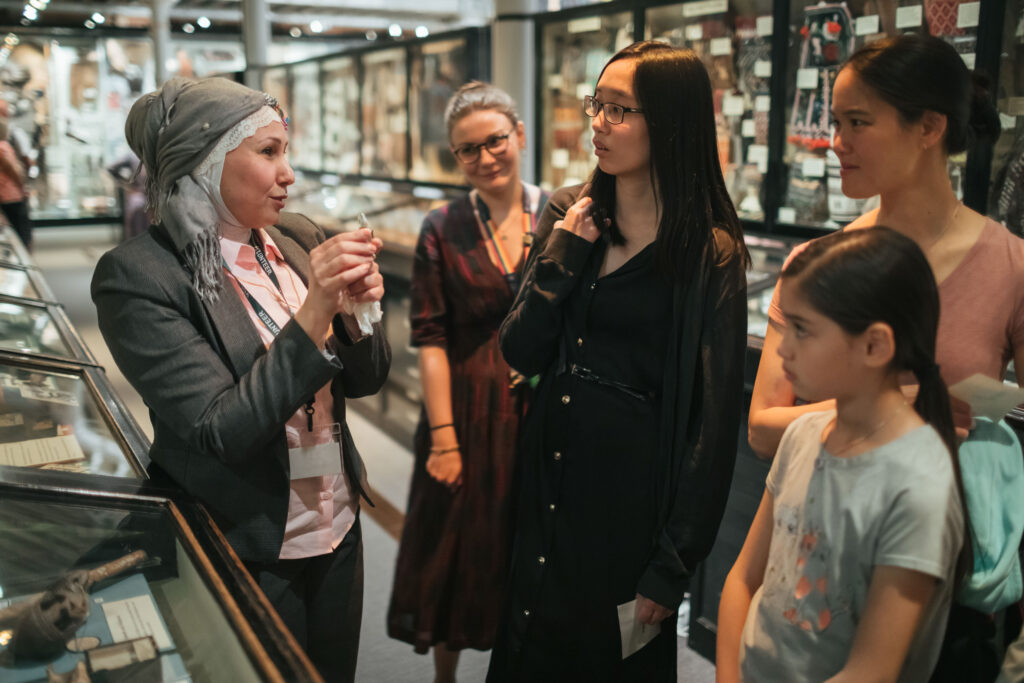Enjoy this article?
Most Museums Journal content is only available to members. Join the MA to get full access to the latest thinking and trends from across the sector, case studies and best practice advice.
The ongoing strike by security guards at London’s Science Museum, Natural History Museum and Victoria & Albert Museum has once again highlighted the issue of low pay in the museum sector.
The guards, who are employed by the external contractor Wilson James, took action “over management’s refusal to negotiate a pay rise and improved conditions”.
Represented by the United Voices of the World union, the guards said they had seen three years of wage stagnation at a time when Wilson James’ net profits increased by more than 50% and the museums were generating significant income.
The dispute offers an insight into the challenges faced by low-paid staff in the museum sector, particularly outsourced workers. But a growing number at every level and role in museums are starting to speak out about the sector’s endemic problem of low pay.
As a result of the high level of inflation in recent years, museum professionals have warned that they cannot live on their salaries. Museums risk a brain drain over the next few years as people leave the sector in search of higher pay.
“It's been great to see some willingness from museums to do better, but all too often it is smaller ones that put the work in to be equitable employers,” says a spokesperson for the grassroots collective, Fair Museum Jobs.
“Some of the largest and wealthiest organisations in the sector are the worst for pay and get away with poor recruitment practices as no one, neither funders, nor the Department for Culture, Media and Sport holds them to account.
“Until fair pay and working conditions are a significant part of the museum Accreditation process, the situation will not change. This organisational inertia at best, and is despite the many excellent people working hard inside their institutions to make positive changes.”
In 2022, the Museums Association’s (MA) Salary Research & Recommendations found that pay was, on average, 10% behind comparator rates in other sectors.
The MA recently published an inflationary update to its salary benchmarks for museums to provide greater clarity on pay. The report recommends approaching the remuneration, recruitment and wellbeing of the workforce in a holistic way.
It includes guidance to help ensure that pay is fairly distributed, covering inclusive recruitment and selection, and equal pay auditing to address salary gaps.
“Adopting a transparent and objective pay policy should ensure that pay is distributed fairly based on the complexity and impact of a job, rather than the demographic background of the employee,” says the report.

“Pay has always been an issue, but is perhaps more palpable within our current context,” says the MA’s workforce development lead Tamsin Russell. “Our work around pay is a priority and we have had great feedback on the recent update, and how people are using it to affect change.”
The Fair Museums Jobs spokesperson said: “While it's excellent to see revised salary guidelines, we would strongly remind employers that they are not what you can get away with, but at their highest levels are the bare minimum they should expect to pay for the world class skills and expertise found in all areas of our sector.”
However, taking progressive action on pay is tempered by the financial constraints facing museums. The new UK Government’s autumn budget was a crushing disappointment for much of the sector, as a hoped-for emergency funding boost for civic museums did not materialise, and some of the tax-raising measures will pile pressure on institutions already close to breaking point.
The increase in employers’ national insurance contributions, coupled with a drop in the earnings threshold from which employers must start to pay – from £9,000 to £5,000 – means that employers will have to pay an additional £770 for each full-time employee on the minimum wage, which rises with every pay grade.
And though the increase in the National Living Wage from £11.44 to £12.21 in April is a boost for low-paid staff, the government has given little consideration to how underfunded culture sector employers will cope with increased costs, with some fearing that it could have a knock-on impact on overall pay structures and lead to widespread layoffs.
“The increases to minimum wage and employers National Insurance announced in the budget put significant additional pressure on already over-stretched civic museum budgets,” says Jon Finch, the head of the English Civic Museums Network.
“Whilst there was a small increase in overall funding to local authorities, the urgent request for short term funding for civic museums went unheeded. Those civic museums that are both independent trusts, and directly run by local authorities, face increasingly challenging financial contexts, and some services will have to make very difficult decisions about their future in the coming months.”
Given the scale of these challenges, the issue of low pay won’t be solved overnight, but strategic thinking is required to prevent a loss of talented staff from the sector.
| Salary benchmarks (£) | Assistant | Officer/co-ordinator | Supervisor/Team leader | Manager/Head of dept |
| Attendants/Front-of-house/Security | 22,892 | 26,655 | 31,662 | 45,980 |
| Museum technician/Building management | 26,697 | 29,619 | 38,285 | 48,782 |
| Fundraising/Marketing | 26,698 | 31,981 | 41,898 | 53,067 |
| Learning/Programming/Outreach | 25,996 | 29,320 | 35,439 | 49,364 |
| Conservators | 30,348 | 36,104 | 44,339 | 59,219 |
| Curators/Collections management | 25,933 | 31,950 | 38,049 | 57,558 |
| Salary benchmarks | Manager/Director | Director/Group director |
| Directors/Group directors | 75,692 | 93,047 |
Most Museums Journal content is only available to members. Join the MA to get full access to the latest thinking and trends from across the sector, case studies and best practice advice.